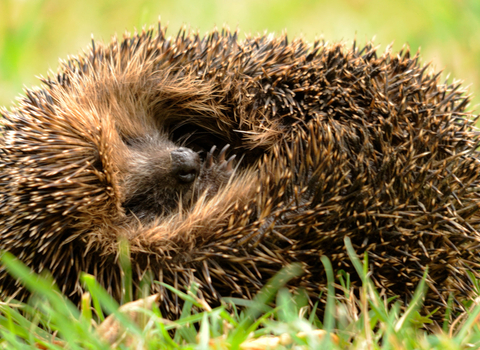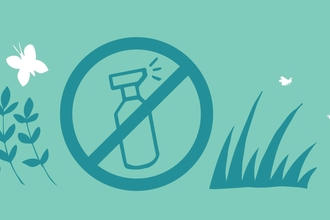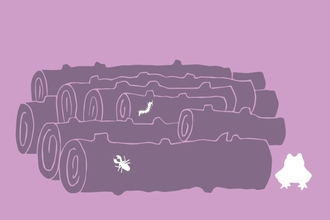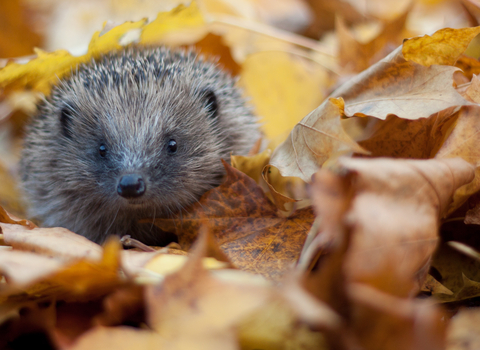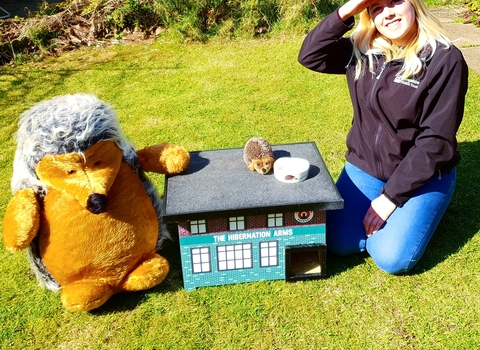Why are hedgehogs declining? 🦔
There is no single cause, which makes it harder to tackle.
Habitat loss - Loss of nesting and foraging habitat through development (urban) and hedgerow removal (rural).
Fragmentation of habitats - Impermeable fencing and lack of connectivity through hedgerows can result in limited movement and isolated hedgehog populations.
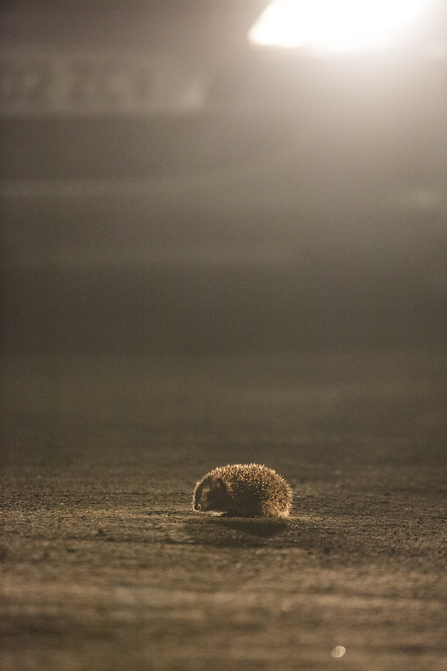
David Woodfall
Competition - Badgers predate hedgehogs and fragment the landscape where hedgehogs avoid them. They also compete for food (e.g. worms, beetles). The relationship is complex but hedgehogs are decreasing in areas where badgers are absent too.
Road Casualties - Up to 335,000 hedgehogs are estimated to die on British roads annually.
Injuries - Hedgehogs are brought to rescue centres with garden injuries (e.g. from strimmers, netting, dog bites).
Lack of food - Chemical treatment of land (e.g. pesticides, fertilizers) can perhaps lead to poisoning, but largely reduces invertebrate diversity and adundance.
How do you know if you have a hedgehog? 🦔
Although nocturnal and often missed, hedgehogs leave signs of their presence:
Droppings
Droppings are often dark, little finger sized and shine with insect remnants.
Footprints
Searching for hedgehog footprints is a good way of discovering if they are around. Both the front and back feet have five toes, though often only four toes show up on the tracks. Look for tracks in soft mud, or you could build a footprint tunnel - Make a plastic triangle (with a plastic floor), place some paper either end of the tunnel, with food flanked by ink in the middle (please use non toxic ink).
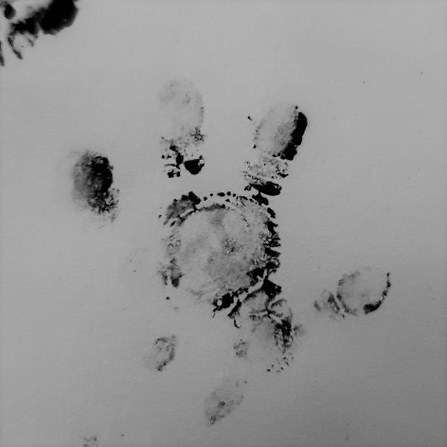
(c) Kathryn Jones
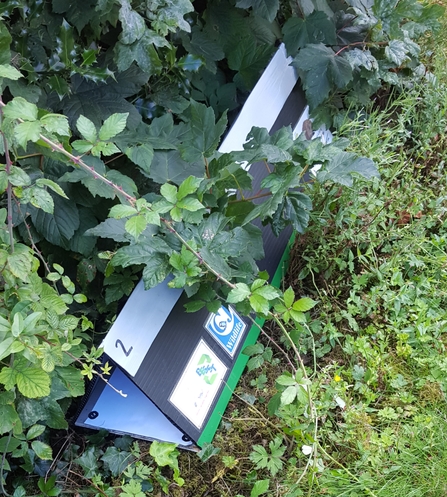
Camera traps
Setting up a camera trap is a brilliant way of discovering what animals are in your garden and observing their behaviour without disturbing them.
Our expert Stuart has some great tips to help you position your cameras to capture a range of garden species. Click here to read more.
What to do next to help 🦔
At certain times of year adult hedgehogs may be seen out in daylight, such as when mothers are weaning young or building nests. These hedgehogs will however look purposeful and will only be out for short periods of time. These hedgehogs are best left to their own devices.
A hedgehog that does not look purposeful and is out in the daylight is however likely to be in need of help. If you see a sick or injured hedgehog, it may be in need of urgent help.
If you haven't already, contact The British Hedgehog Preservation Society, who can offer in depth advice.
Our local rescue centre Cuan Wildlife Rescue, near Much Wenlock can also offer advice and will take hedgehogs into their care for rehabilitation. Contact them by phoning: 01952 728070. If you have a critically injured creature outside the period 7am to 10pm, please ring the EMERGENCY mobile number 07731 347998
Handling and care
Hedgehogs are wild animals, so being handled is a stressful experience.
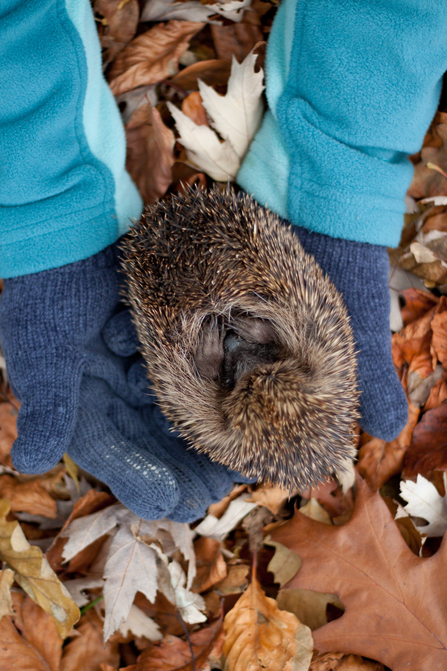
© Tom Marshall
Prepare a cardboard box with high sides by lining it with a towel or scrunched up newspaper (so that the hedgehog can hide).
Find yourself a pair of gardening gloves before gently scooping up the hedgehog into the box.
Keep the box in a quiet, warm place: a hot water bottle filled with hot tap water wrapped in a towel can provide a gentle heat source – make sure it doesn’t go cold!
You can provide some fresh water and meaty cat or dog food (not fish based!), but don't try to feed the hedgehog directly.
May - September
If you accidentally disturb a hedgehog nest with babies, re-cover as quickly and quietly as possible. Never touch the babies, as your smell may cause the mother to abandon or eat them. If you suspect they have already been abandoned, leave them for an hour and then very quietly check to see if the mother has returned.
If the mother does not return and the babies become distressed they can be placed in a box with a hot water bottle wrapped in a towel while you seek advice. If you find young carefully check the area thoroughly as there is usually more than one, and can be as many as 5 or 6. Females may be seen in the daylight hours while they are weaning young, it is advisable to check for a nearby nest before removing an adult so not to remove a mother from babies.
October and into Winter
Hibernation is a flexible process and hedgehogs will only begin to hibernate when it is consistently below 10 degrees. It is not unusual to see hedgehogs active when weather is fluctuating between cold and milder weather, and hedgehogs will often move nests mid-winter. Juveniles born late in the season may not have enough fat reserves to survive winter, please monitor any juvenile that you think may be too small to survive the winter by watching and leaving out food. Ask for help (details above) if you think action is needed
How can you help hedgehogs?
Gardens, hedgerows, woodlands, grasslands, parks, and cemeteries are all important hedgehog habitats, and adult hedgehogs travel between 2-3km per night over home ranges between 10-20 hectares in size searching for food and mates – that’s entire housing estates and neighbourhoods!
Our work for hedgehogs 🦔
Nature Recovery Networks - Fragmentation of habitats across the UK has meant that hedgehogs survive on small pockets of isolated spaces, by connecting these sites together it gives them a chance to move and adapt to change. To find out more about our work to link up nature-rich spaces, click here.
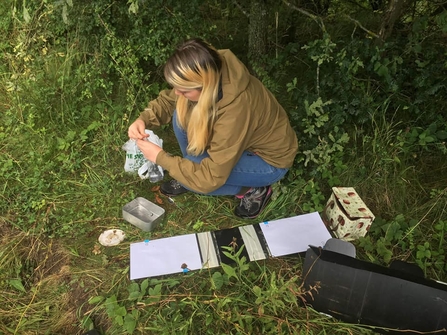
(c) Alastair Hughes-Roden
Hedgehog Heroes of Shropshire - In 2019 we employed our first Trainee Hedgehog Officer through our project (Growing Confidence) aimed at specifically engaging 11 -25's with the environment. Kathryn is raising awareness of our Shropshire hedgehogs and delivering projects to make our spaces more hedgehog-friendly and encouraging local communities to improve their own gardens. To find out more, click here.

